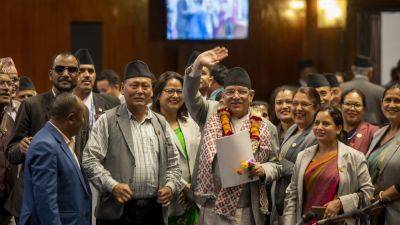Can Nepal get a lift from wooing by India and China to become a middle-income economy?
Potential investors pledged during the summit to inject as much as 9.13 billion Nepali rupees (US$68.3 million) into the country, which is still navigating its transition from a centralised monarchy to a federal democratic republic under its 2015 Constitution, as well as an economic transformation from being less reliant on international aid to becoming a hub for global investments.
“Our unwavering commitment to liberal economic policies lays the foundation for a vibrant and investor-friendly business environment,” said Nepal Prime Minister Pushpa Kamal Dahal.
“Nepal’s strategic location, situated between emerging markets India and China, signifies it as an ideal investment destination,” he told the summit during its opening on Sunday.
While India and China did not directly compete with each other to invest in the projects offered at the summit, their overlapping interests could be seen in the resulting deals that were announced.
Unsurprisingly, delegates from India and China formed the largest contingent among the 2,400 representatives from various countries who attended the summit. While India sent about 150 participants, China’s delegation was twice as large.
The airports were built with Chinese funding totalling hundreds of millions of dollars. In contrast, India has hesitated to open up air routes to Nepal due to the two airports’ link to Beijing’s Belt and Road Initiative.
“Air and road links and border checkpoints are progressing well. Feasibility studies of the cross-border railway and cross-border transmission lines are moving forward. That’s why today’s summit holds a very special significance,” said Luo Zhaohui, chairman of the state-run China International Development Cooperation Agency, during his address at the







